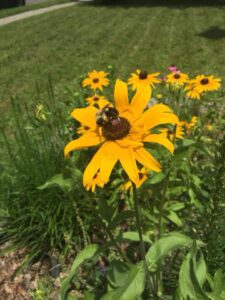 I began working at NJ Audubon’s Plainsboro Preserve in March of 2020. As an experienced naturalist, I have worked at various nature centers since 1987 and was looking forward to this new challenge. I had visited the Plainsboro Preserve before and knew it was referred to as the “hidden gem of Middlesex County.” It is hidden. This beautiful 1,000-acre preserve is nestled between suburban neighborhoods and farmland. There are 5 miles of trails winding through a variety of habitats. Visitors can enjoy strolling through mature hardwood forests with tulip poplar trees and tall cinnamon ferns. Perhaps someone would prefer to walk along the field edge with bluebirds and tree swallows vying for nest boxes. Near the edge of those fields, the curious minded crowd can search the tall, beautiful milkweed flowers for monarch butterflies and caterpillars. In the center of all of this open space is the cornerstone of the preserve, the beautiful Lake McCormack. The lake is used by many species of waterfowl and wading birds, beavers, turtles, fish, frogs and otters. The local families have loved the preserve, but most NJ residents did not know it existed.
I began working at NJ Audubon’s Plainsboro Preserve in March of 2020. As an experienced naturalist, I have worked at various nature centers since 1987 and was looking forward to this new challenge. I had visited the Plainsboro Preserve before and knew it was referred to as the “hidden gem of Middlesex County.” It is hidden. This beautiful 1,000-acre preserve is nestled between suburban neighborhoods and farmland. There are 5 miles of trails winding through a variety of habitats. Visitors can enjoy strolling through mature hardwood forests with tulip poplar trees and tall cinnamon ferns. Perhaps someone would prefer to walk along the field edge with bluebirds and tree swallows vying for nest boxes. Near the edge of those fields, the curious minded crowd can search the tall, beautiful milkweed flowers for monarch butterflies and caterpillars. In the center of all of this open space is the cornerstone of the preserve, the beautiful Lake McCormack. The lake is used by many species of waterfowl and wading birds, beavers, turtles, fish, frogs and otters. The local families have loved the preserve, but most NJ residents did not know it existed.
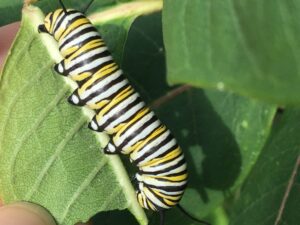 Then came spring 2020. Parks were shut down. People were told to stay home. We were advised not to go further than ten miles from where we live. What would become of this beautiful property? It turns out, people became exhausted of being stuck in their home. People were tired of staring at computer screens all day. People needed an escape and turned to nature.
Then came spring 2020. Parks were shut down. People were told to stay home. We were advised not to go further than ten miles from where we live. What would become of this beautiful property? It turns out, people became exhausted of being stuck in their home. People were tired of staring at computer screens all day. People needed an escape and turned to nature.
In nature, we found solace. When the gates to the Plainsboro Preserve were reopened, more people came than ever before. People came to walk; people came to watch birds; people came to sit next to the lake; and people came to feel a small sense of normalcy. While all of society had shut down, nature continued. The bluebirds still built nests in the nest boxes, laid eggs and raised their young. The wood frogs still sang on the warm spring nights and laid their jelly-like eggs in vernal pools. The butterflies still flitted from flower to flower, sipping nectar and pollinating plants. Nature continued. Flowers bloomed and birds sang.
 We began to host socially distant programs. When we opened registration for An Evening with the Moths, the tickets sold out in one week. It was an experience enjoyed by all who attended. It was so well attended, we hosted the program three more times. We had to get creative with programs. People wanted to come, but we all needed to be safe. So, we created programs called Nature Buddies and Nature Explorers. During these programs, children explored the woods in search of salamanders and frogs. We visited a beaver dam and tossed sticks in a stream. Sometimes the children laughed as they ran through the big fields. Their laughter was a tonic to the parents as it was a sound we all needed to hear. We hosted a Winter Solstice Celebration for people to say goodbye to 2020 and the darkness it brought, inviting participants decorate evergreen trees with food for wildlife. We then said goodbye to the darkness of the old year and welcomed the longer daylight hours of the coming year.
We began to host socially distant programs. When we opened registration for An Evening with the Moths, the tickets sold out in one week. It was an experience enjoyed by all who attended. It was so well attended, we hosted the program three more times. We had to get creative with programs. People wanted to come, but we all needed to be safe. So, we created programs called Nature Buddies and Nature Explorers. During these programs, children explored the woods in search of salamanders and frogs. We visited a beaver dam and tossed sticks in a stream. Sometimes the children laughed as they ran through the big fields. Their laughter was a tonic to the parents as it was a sound we all needed to hear. We hosted a Winter Solstice Celebration for people to say goodbye to 2020 and the darkness it brought, inviting participants decorate evergreen trees with food for wildlife. We then said goodbye to the darkness of the old year and welcomed the longer daylight hours of the coming year.
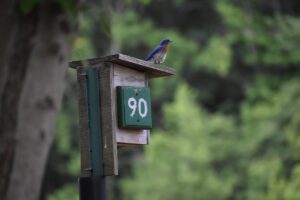 While many new visitors came to the Plainsboro Preserve, some families were searching for ways to bring nature into their own safe spaces. People asked how they could attract wildlife to their yard. NJ Audubon staff encouraged people to garden with native plants. While some plants such as butterfly bush or Bradford pear may provide a beautiful display of flowers, those plants are invasive. They are not native to the area. Invasive plants do not provide what pollinators need. Native plants provide more nutrition and the proper nectar for the native bees, butterflies and hummingbirds. To support pollinators, instead of butterfly bush, plant NY Ironweed. If you would like to attract monarch butterflies, plant milkweed. If you are hoping hummingbirds will choose your yard, plant cardinal flower or beebalm. We hosted native plant sales at four nature centers across NJ. Our goal was to instruct everyone on how to create a wildlife habitat in their own space.
While many new visitors came to the Plainsboro Preserve, some families were searching for ways to bring nature into their own safe spaces. People asked how they could attract wildlife to their yard. NJ Audubon staff encouraged people to garden with native plants. While some plants such as butterfly bush or Bradford pear may provide a beautiful display of flowers, those plants are invasive. They are not native to the area. Invasive plants do not provide what pollinators need. Native plants provide more nutrition and the proper nectar for the native bees, butterflies and hummingbirds. To support pollinators, instead of butterfly bush, plant NY Ironweed. If you would like to attract monarch butterflies, plant milkweed. If you are hoping hummingbirds will choose your yard, plant cardinal flower or beebalm. We hosted native plant sales at four nature centers across NJ. Our goal was to instruct everyone on how to create a wildlife habitat in their own space.
Five key elements will make your space ideal for wildlife: food, water, cover, places for wildlife to raise young, and using wildlife-friendly landscaping practices. If you would like to invite wildlife to your space, hang bird houses, buy native plants, and fill a birdbath. Choose organic treatments for your yards instead of harsh insecticides and herbicides. Having a space where wildlife can find all they need will benefit not only the birds and the butterflies, but the people as well. In the moments when a connection is made with wildlife, whether it is in having a butterfly sipping from a flower we planted, or a bird splashing in a birdbath we filled, our mood is lifted. We have a sense of accomplishment; a sense that someone needs us.
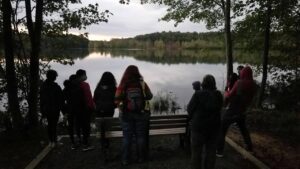 There is increasing awareness among researchers and health practitioners that simply spending time outdoors can reduce stress, improving our psychological and physical well-being. So, are we doing this for the wildlife or for ourselves? I believe it is for the good of us all.
There is increasing awareness among researchers and health practitioners that simply spending time outdoors can reduce stress, improving our psychological and physical well-being. So, are we doing this for the wildlife or for ourselves? I believe it is for the good of us all.
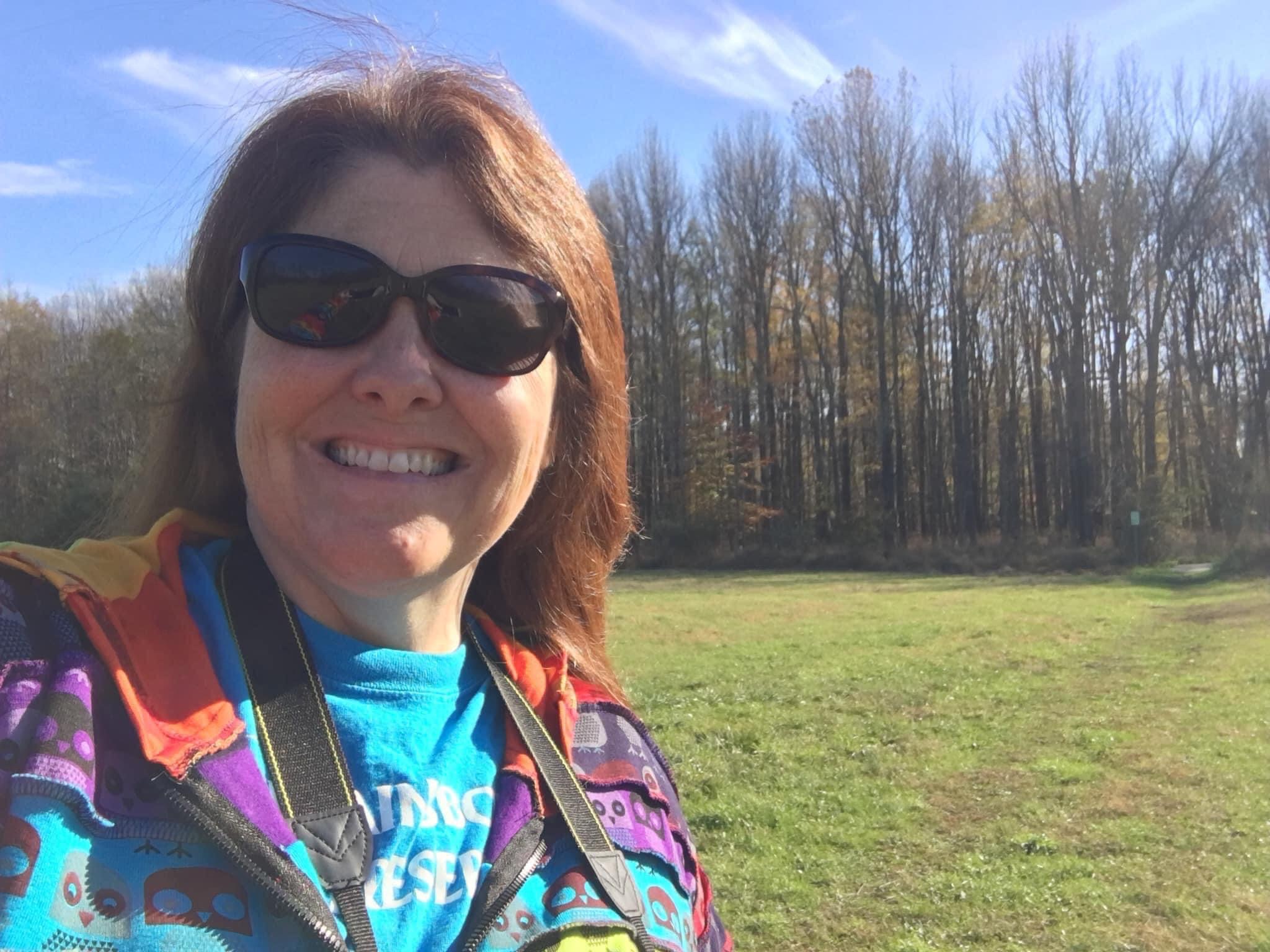
Anne Marie Price is the Manager and Teacher Naturalist for NJ Audubon at the Plainsboro Preserve. Anne has been teaching environmental education for more than 30 years at various nature centers throughout NJ. Her work and life mission is to inspire people to respect, appreciate and protect the wildlife and the environment. If you would like to learn more about the Plainsboro Preserve, NJ Audubon, or Gardening for Wildlife visit the website at NJaudubon.org. On the NJ Audubon website you can find a calendar of events to register for programs, a page detailing how to become a volunteer or how to join as a member of NJ Audubon.
